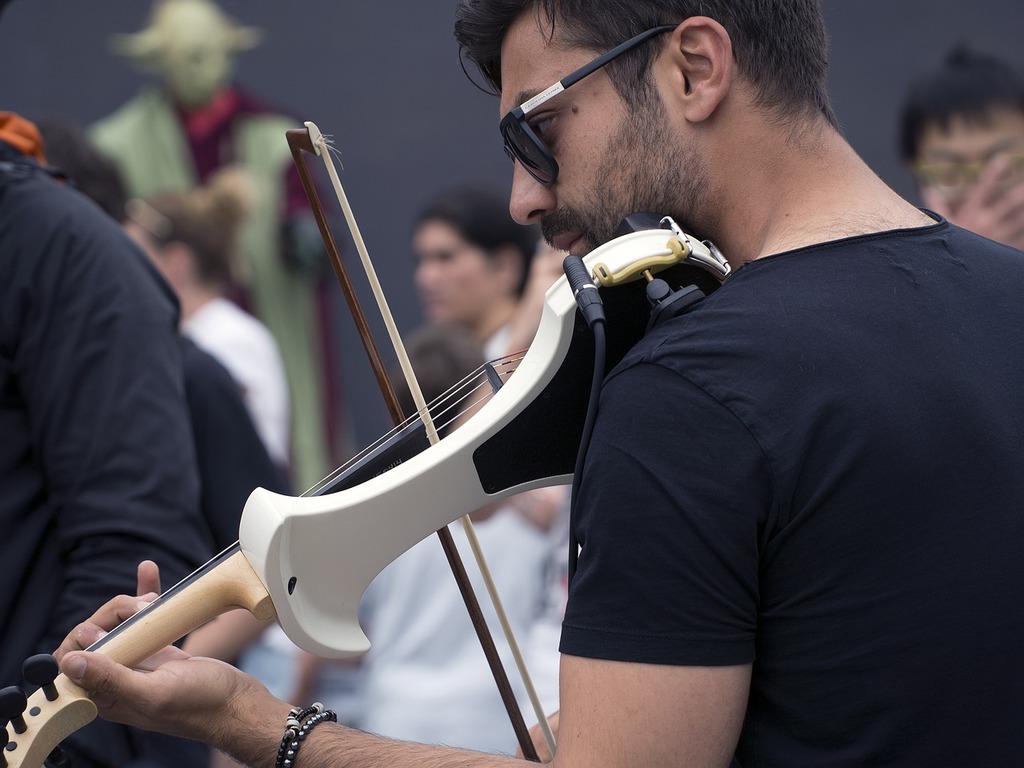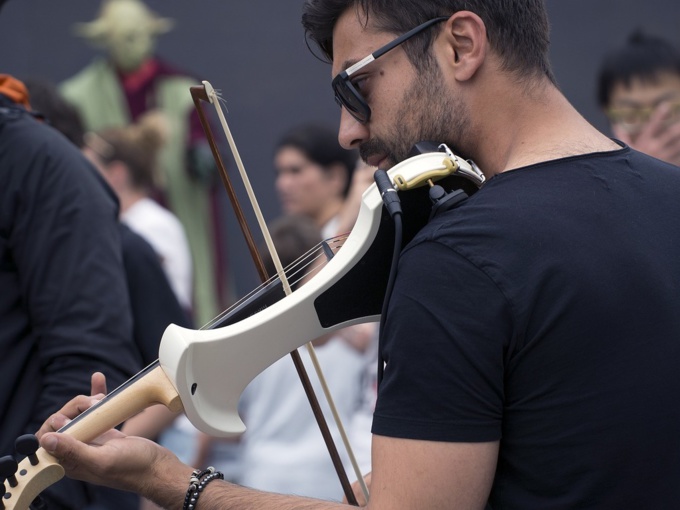The author of the idea, Malcolm Gladwell, relied on a research of the Swede Anders Ericsson, a professor at the University of Florida, the “grandfather” of research in the field of skills development. However, according to Ericsson, there are several omissions in Gladwell’s theory.
10,000 hours of quality
First, the theory does not mention that it is not the quantity but the quality that counts. Most people, having reached a satisfactory level of skill, do not strive to develop further. According to Ericsson's research, one should not just repeat the same thing for ten thousand hours, but practice purposefully. This is a special type of practice, when you constantly train a certain skill with a clear goal and thorough feedback. Having perfected one skill, you go to the next, more difficult.
Ericsson studied the effect of purposeful practice on professional violinists. And found out that they all practiced the same number of hours per week, but the best of them devoted this time to purposeful practice. The time of practice did not affect the quality of performance by itself.
Ericsson cited an example of a focused practice of learning to play the violin. The teacher listened to the melody and pointed out shortcomings - for example, a tempo that is too fast or slow. He also gave special exercises to improve it. The student performed them until the teacher decided that the play was well, and then allowed the student to move on to more complex exercises.
Plus or minus
The second serious omission of the rule: the Ericsson study did not confirm that ten thousand hours even of purposeful practice would make you a professional. According to the study, ten thousand hours of purposeful practice is an arithmetic average for those specialists whose practices Ericsson studied. In other words, some spent significantly fewer hours, while others took more time.
"It is strange to think that cells of the body will consider how much you are doing, and that everything will change when the mysterious hours counter exceeds ten thousand."
Ericsson is sure that the number of hours is different for everyone and for every task. For example, it takes less time to become an expert in less popular field. On the other hand, popular areas may take considerably more than 10,000 hours. According to Eriksson, winners of international piano competitions usually take about 25,000 hours to reach this level. Unfortunately, it is difficult to study this process, since most professionals do not bother to write down their schedule.
Plastic brain
The question remains: why is purposeful practice effective? For the answer, the author turned to an unexpected source - taxi drivers. With the help of the MRI apparatus, scientists have discovered something unexpected in the pictures of the taxi drivers' brains.
The drivers had an enlarged posterior part of the hippocampus. This area is responsible for spatial orientation. It is activated when we, for example, memorize perceptible objects in order to get home. In short, the taxi drivers' brains are designed to make it easier for them to navigate the city.
Scientists compared brains of taxi drivers and representatives of other professions, who also romp around the streets for days — bus drivers. It turned out that, other things being equal, hippocampuses of the bus drivers were of usual size. Why? Because they drove all the time along the same route, and taxi drivers went on a new, sometimes not known path every time. Simply put, taxi drivers purposefully practiced (in navigation).
Customers called the address, taxi drivers decided how to get there (before the advent of GPS), and then received a positive or negative feedback, depending on the result. And it seems that over time, purposeful practice has changed the structure of their brain.
It’s applicable to other skills as well. According to studies, brains of musicians, bilingual people and even jugglers undergoe gradual changes with practice and new knowledge. The ability of the brain to adapt to new situations and experiences is called plasticity.
It is based on neurogenesis, the constant renewal of brain cells. According to one study, the human brain produces more than 1,400 new cells daily. New cells need eight weeks to mature. During this time, they migrate to the most active areas of the brain. If you are a taxi driver and are constantly driving around the city, the cells will be directed to the brain area responsible for navigation. Thus, the brain adapts to new skills. Moreover, if you do not force the cells to work, they die off. In other words, thanks to learning, new brain cells survive. And join the active parts of the brain.
Consequently, a unique talent is not a genetic lottery win, but, as a rule, the result of a long and structured practice.
Based on The Creative Curve. How to Develop the Right Idea, at the Right Time by Allen Gannett
10,000 hours of quality
First, the theory does not mention that it is not the quantity but the quality that counts. Most people, having reached a satisfactory level of skill, do not strive to develop further. According to Ericsson's research, one should not just repeat the same thing for ten thousand hours, but practice purposefully. This is a special type of practice, when you constantly train a certain skill with a clear goal and thorough feedback. Having perfected one skill, you go to the next, more difficult.
Ericsson studied the effect of purposeful practice on professional violinists. And found out that they all practiced the same number of hours per week, but the best of them devoted this time to purposeful practice. The time of practice did not affect the quality of performance by itself.
Ericsson cited an example of a focused practice of learning to play the violin. The teacher listened to the melody and pointed out shortcomings - for example, a tempo that is too fast or slow. He also gave special exercises to improve it. The student performed them until the teacher decided that the play was well, and then allowed the student to move on to more complex exercises.
Plus or minus
The second serious omission of the rule: the Ericsson study did not confirm that ten thousand hours even of purposeful practice would make you a professional. According to the study, ten thousand hours of purposeful practice is an arithmetic average for those specialists whose practices Ericsson studied. In other words, some spent significantly fewer hours, while others took more time.
"It is strange to think that cells of the body will consider how much you are doing, and that everything will change when the mysterious hours counter exceeds ten thousand."
Ericsson is sure that the number of hours is different for everyone and for every task. For example, it takes less time to become an expert in less popular field. On the other hand, popular areas may take considerably more than 10,000 hours. According to Eriksson, winners of international piano competitions usually take about 25,000 hours to reach this level. Unfortunately, it is difficult to study this process, since most professionals do not bother to write down their schedule.
Plastic brain
The question remains: why is purposeful practice effective? For the answer, the author turned to an unexpected source - taxi drivers. With the help of the MRI apparatus, scientists have discovered something unexpected in the pictures of the taxi drivers' brains.
The drivers had an enlarged posterior part of the hippocampus. This area is responsible for spatial orientation. It is activated when we, for example, memorize perceptible objects in order to get home. In short, the taxi drivers' brains are designed to make it easier for them to navigate the city.
Scientists compared brains of taxi drivers and representatives of other professions, who also romp around the streets for days — bus drivers. It turned out that, other things being equal, hippocampuses of the bus drivers were of usual size. Why? Because they drove all the time along the same route, and taxi drivers went on a new, sometimes not known path every time. Simply put, taxi drivers purposefully practiced (in navigation).
Customers called the address, taxi drivers decided how to get there (before the advent of GPS), and then received a positive or negative feedback, depending on the result. And it seems that over time, purposeful practice has changed the structure of their brain.
It’s applicable to other skills as well. According to studies, brains of musicians, bilingual people and even jugglers undergoe gradual changes with practice and new knowledge. The ability of the brain to adapt to new situations and experiences is called plasticity.
It is based on neurogenesis, the constant renewal of brain cells. According to one study, the human brain produces more than 1,400 new cells daily. New cells need eight weeks to mature. During this time, they migrate to the most active areas of the brain. If you are a taxi driver and are constantly driving around the city, the cells will be directed to the brain area responsible for navigation. Thus, the brain adapts to new skills. Moreover, if you do not force the cells to work, they die off. In other words, thanks to learning, new brain cells survive. And join the active parts of the brain.
Consequently, a unique talent is not a genetic lottery win, but, as a rule, the result of a long and structured practice.
Based on The Creative Curve. How to Develop the Right Idea, at the Right Time by Allen Gannett



















